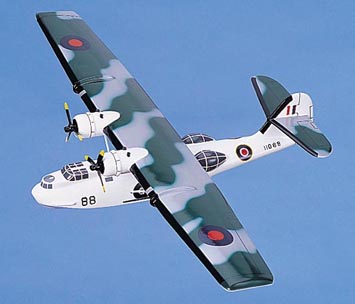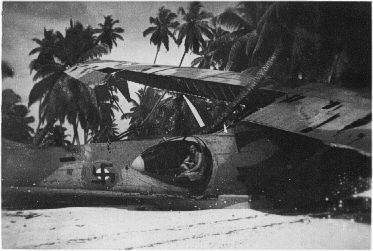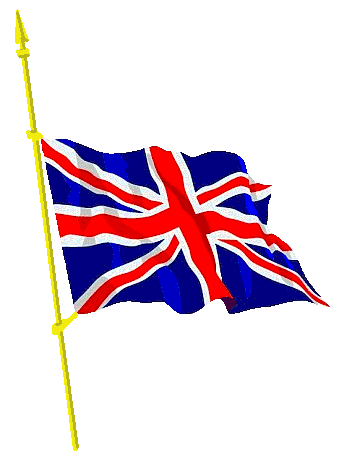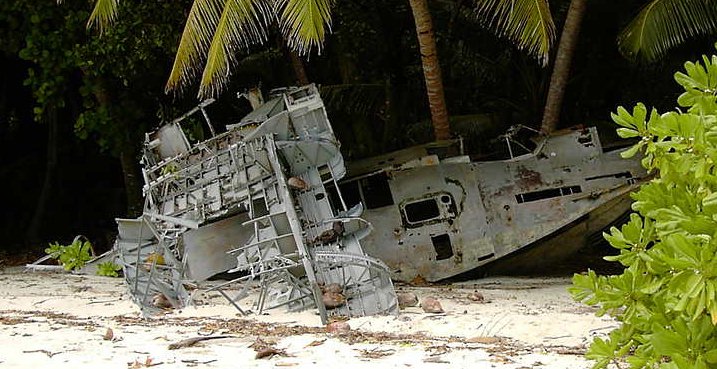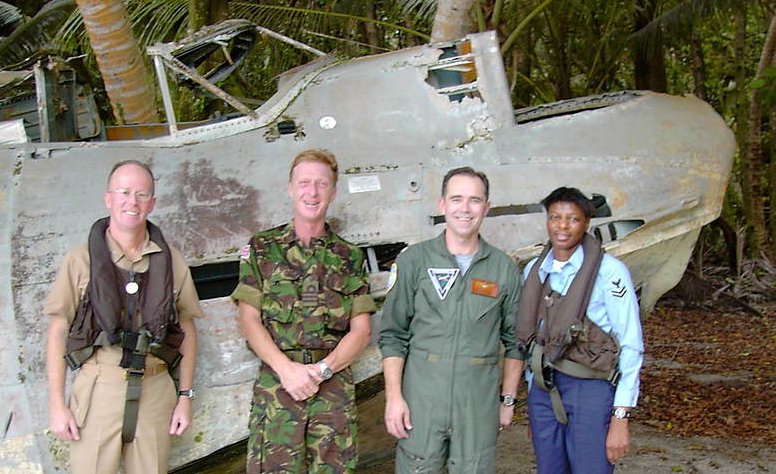| Visit the Rest
of The PPDRDG by Returning
to
the Site Map and Picking Another Page! The PROPEOPDEMREP's Commissar of Historical Preservationist Memorials Presents: The Story of "Katie" Jim Park's PBY Catalina! |
|
 |
|
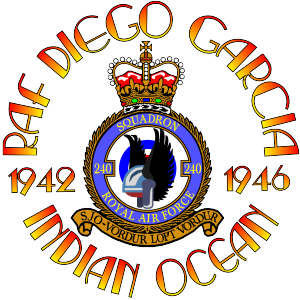 |
Yes,
boys
and girls, before there was an NSF,
there was RAF Diego
Garcia.No air conditioning, no NAVAIDS, no runway, Just the same lagoon we all know and love... Here's the story of one pilot, one crew, one airplane and one squadron from the mists of memory. |
| (The
240 Squadron RAF Motto was "Guardian of the Sea;
Guardian of the Sky") |
|
|
There she sits!
On the most beautiful beach in the world rests what's
left of one of the most beautiful airplanes that ever
flew or landed on the water. How did she get to
DG? Ahhhhh, there lies a wonderful story......
Provided you can get
to the Plantation, there are plenty of things to
see. The most interesting to aviators is the PBY
"Catalina" just west of the pier along the
beach. The Consolidated PBY first flew in the
1930s and was the definitive air-sea rescue aircraft
of the age. During WWII, the PBY (P = patrol, B
= Bomber, Y = the manufacturer's identifier,
Consolidated) was equipped with depth charges, bombs,
torpedoes, and machine guns, and her job was to seek
out the enemy at sea. The PBY did everything at
100 miles an hour, and could stay aloft for up to 30
hours with full tanks and when the engines were leaned
out properly. The official nickname of the PBY
was the "Catalina", though she was more commonly known
as the "Cat", "P-Boat", or "Dumbo".
The PBY on the beach at Diego Garcia was British, from RAF Squadron 240, and therefore is a "Catalina" (the Brits didn't give complicated designations to their aircraft). She was flown by 21-year old RAF Pilot Officer James Park. Her registration number was VA718, and Jim called her "Katie" since K was the squadron letter. On the 16th of September 1944, Jim took off at night from Madras and flew Katie south to Diego via Kelai in the Maldive Islands. They tried to refuel at Kelai, but the bowser had sunk due to a storm, so they had to make it from Kelai to Diego Garcia - a 10 1/2 hour trip, on the fuel remaining in Katie's tanks (the trip to Kelai had been 8 1/2 hours through severe storms). At Diego Garcia, they would be based for missions looking for a reported Japanese submarine. Jim's navigator got lost on the way from the Maldives, and this added to the fuel consumption - he mistook one island for another en route, so they were off course. The crew sent a QDM message by hand, and then held down the key so that the radio operators could get a fix and give them directions. As this also gave their location to the enemy if they were listening, this was usually severely frowned upon. When Jim landed at DG, the engines cut as he was running up to the buoy! At the Plantation at the time, refueling was done from Gerry cans which were loaded on a bogy, wheeled out to the pier, loaded on to a rowing boat, rowed out to the aircraft, handed up - 4 gallons at a time up - on to the wing and hand poured, not pumped, into the tanks. The PBY held 1,450 gallons total - that's a lot of Gerry cans! They started to fuel Katie, but were ordered to stop, as the other PBY on the mission flight took priority. It was from a different squadron, based in Ceylon, and was on first call to chase the submarine which was reported heading towards Madagascar. The other PBY refueled and left, and refueling of Katie was scheduled for the next day. Katie had absolutely no fuel and was light in the water, bobbing around like a cork. It was not an amphibious version of the PBY, and with no beaching gear, it couldn't be pulled on land. Jim left a night watch (one of his crew members) on Katie, and the rest of the crew went off to bed in a Basha hut, dead tired from the trip down from India. It was a typical, pleasant DG night. And then the storm hit. The wind blew that night to cyclone strength, and sprung the aircraft from the buoy. The night watch on the PBY couldn't start any engines because the tanks were completely empty. If there had been fuel in the tanks, he might have been able to keep Katie turned into the wind, and she would have been saved. But alas, all the night watch could do was fire Varey pistol shells all over the sky. He stayed on board, feeling completely helpless until the plane went aground. Finally someone from the island garrison shook Jim awake and said "Wake up, your kite's on the beach!"
They
got to Katie, and found a palm tree, which went
vertical, then horizontal and then vertical again in
the wind, was sawing along the trailing edge of the
wing, and had taken off the aileron and the rear
portion of the wing, rendering Katie unflyable.
Jim and his crew salvaged the contents as much as they
could by hand. The first thing they removed was an 8
day clock ("very valuable" says Jim). They took
cases, dingys, lifejackets, parachutes, the
stove. Everything else was left. So the
engines, etc, were removed later by someone else.
And Katie has rested on her little beautiful stretch of beach ever since...... Top Row, Left
to Right - Watson (?) (Wireless Operator/Air
Gunner - WO/AG) - may not have been at DG;
unremembered name (WO/AG) - may not have been at
DG; LeFevre "Leafy" (WO/AG); Venny Gough (WO/AG) -
"Crazy ex Chindit, spent time blowing up palm
trees at DG"; Jack Freel (now deceased)
(Fitter - engines and airframes). Bottom Row,
Left to Right: Chessels (Aussie)
(Navigator); James Park (Captain - Age 21!); Ron
Tench (2nd Pilot) - not at DG; unremembered name
(Rigger - airframes/cook/air gunner - on board
when Katie beached).
Jim Park, Madras India, 1944. ARRIVAL MESSAGE: ACCIDENT INFORMATION: So, you ask, what ever happened to Jim Park? He waited 9 days until the 25th, when PBY no.VA720 came from 240 Squadron at Madras, and on board was Squadron Leader Parry. They inspected Katie, determined she was lost, then flew to Addu Atoll, then to Koggala in Ceylon, and then back to base at Redhills Lake in Madras. That took two days. There was Court of Inquiry held at Koggala several weeks later, another Catalina base. No blame was apportioned - Katies loss was judged an unfortunate accident. It took about three months before Jim got another plane, but he spent the time flying other PBY's to keep his hand in. Whoa....you ask....how did I find all this out? Well, its like this: I mailed copies of the photos you see here to my father, who was a PBY enlisted crew member in the U.S. Coast Guard in the late 1940's, and was himself rescued by a P-Boat after his ship, USCGC Magnolia, was sunk off Mobile, Alabama, in WWII. So Dad sent the photos to a PBY association which published the photos in its newsletter. The photos were in turn reprinted in a British Catalina association newsletter, and Jim saw them.
Mr.
Park was retired and living in his home town of Perth,
Scotland at the time, and wrote my Dad and asked him
to pass on his thanks for the photos to me! Then
one day a couple years ago, Dad got a letter from Jim
saying he and his son were passing through Las Cruces,
New Mexico (where we live these days) and asked if he
could stop by and talk about DG, Catalinas, and the
old country (my Dad's mom was from Glasgow). So
we got to spend a great afternoon during which Jim
recounted the story above. Since then, he's
passed on the details to me through his son Brian, and
they are reprinted here pretty much verbatim.
Its amazing how much those WWII vets can remember from
55 years ago! Jim decided to stay stateside to
be with his son, moving to Austin, TX, and even came
back out to Las Cruces and stayed with my parents for
a couple weeks on a vacation, driving his brand new
Ford Mustang! He was quite a character, or as
his son Brian said, "a braw Strichen loon."
So that's how the secret of the PBY at the
Plantation came to be told, after all these decades.
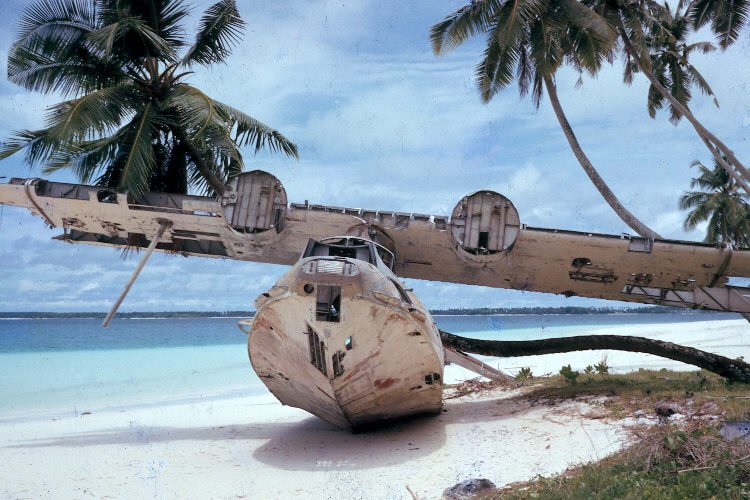 ABOVE: KATIE in 1968 (thanks to Kirby Crawford for the photo) BELOW: In 1972 (thanks to Larry Duran for the photo) 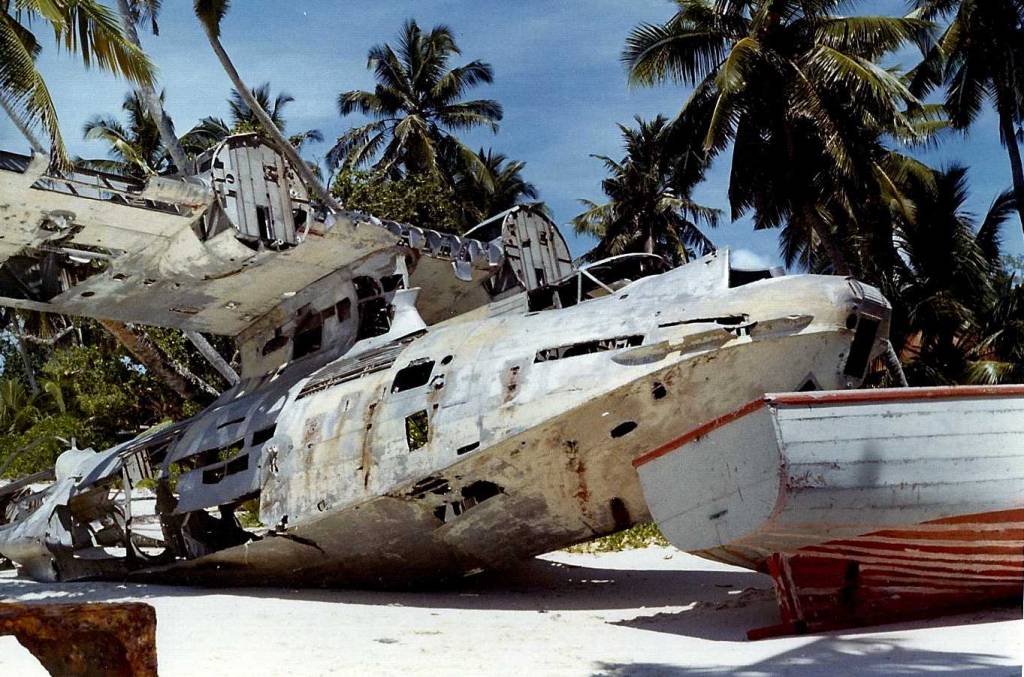 Below: Roger Hickey's photo of KATIE in 1972. Note the water up to the blisters. BTW, the boat seen in front of KATIE is an "copra boat" used to ferry coconuts from the far beaches of the lagoon to the main plantation at East Point for processing to extract the meat and make copra. 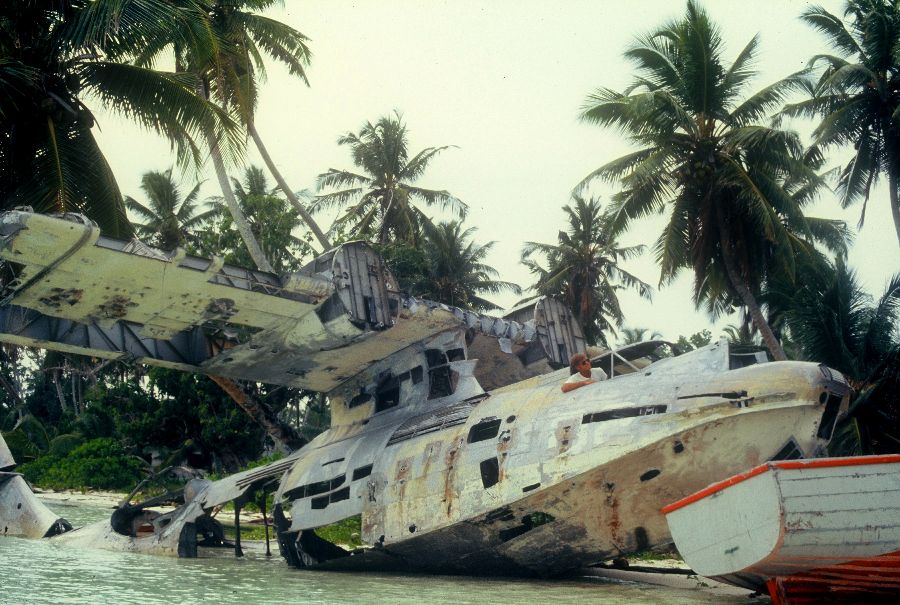
"Katie" as
she slowly sinks into the beach, 2003.
Placing the Marker celebrating Jim and
his crew. From the left: 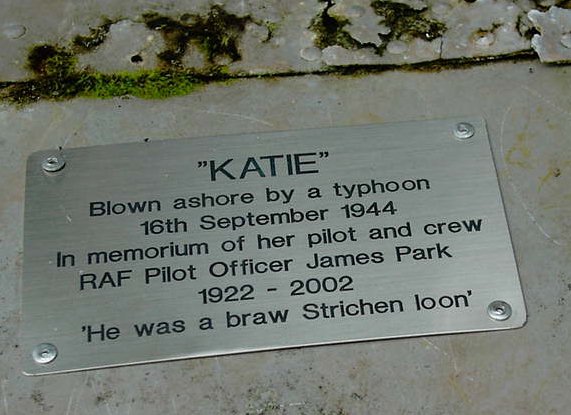 |
|
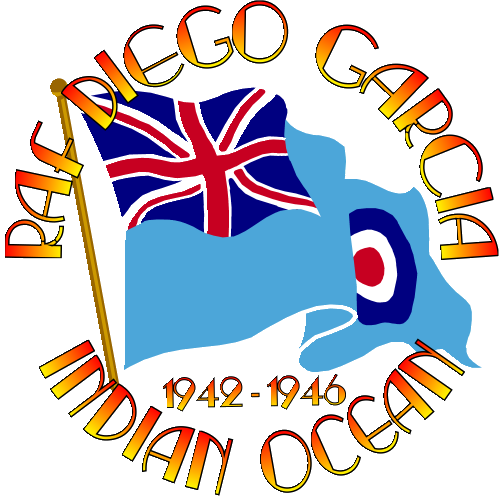 |
|
